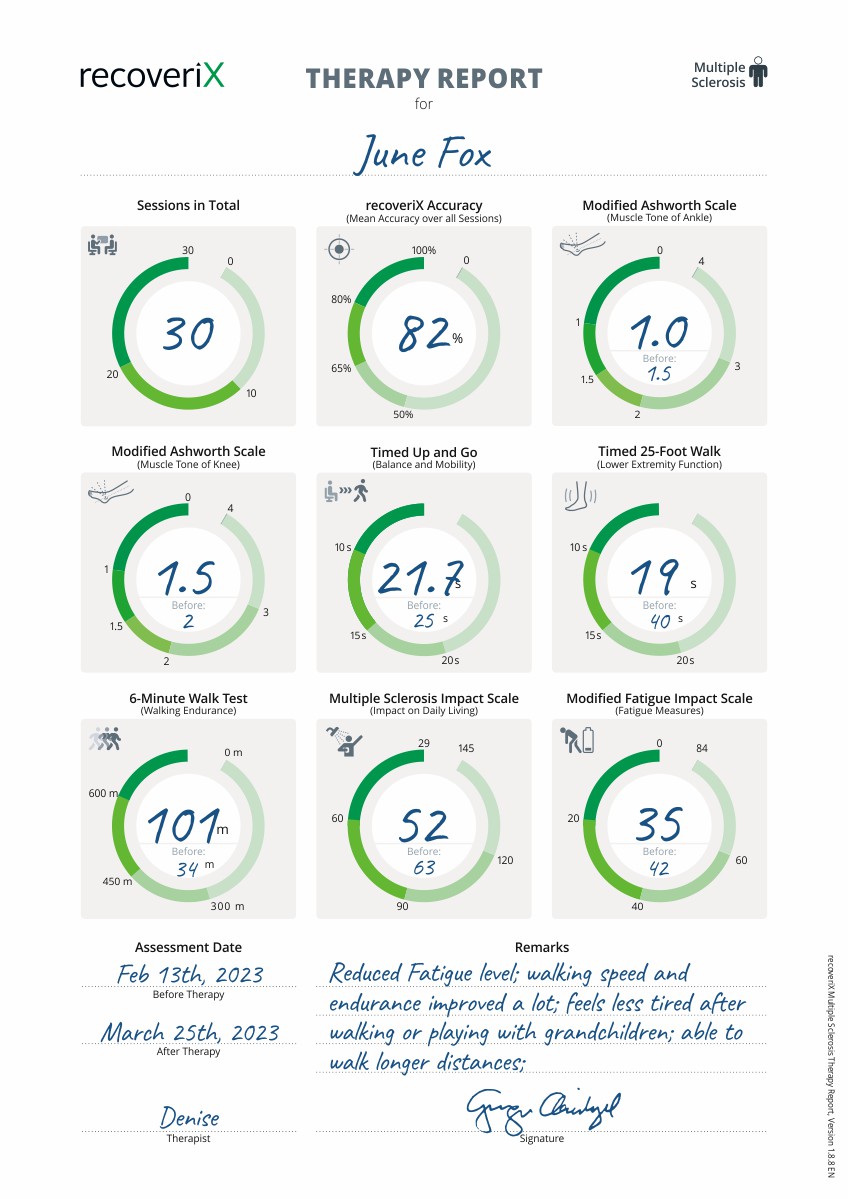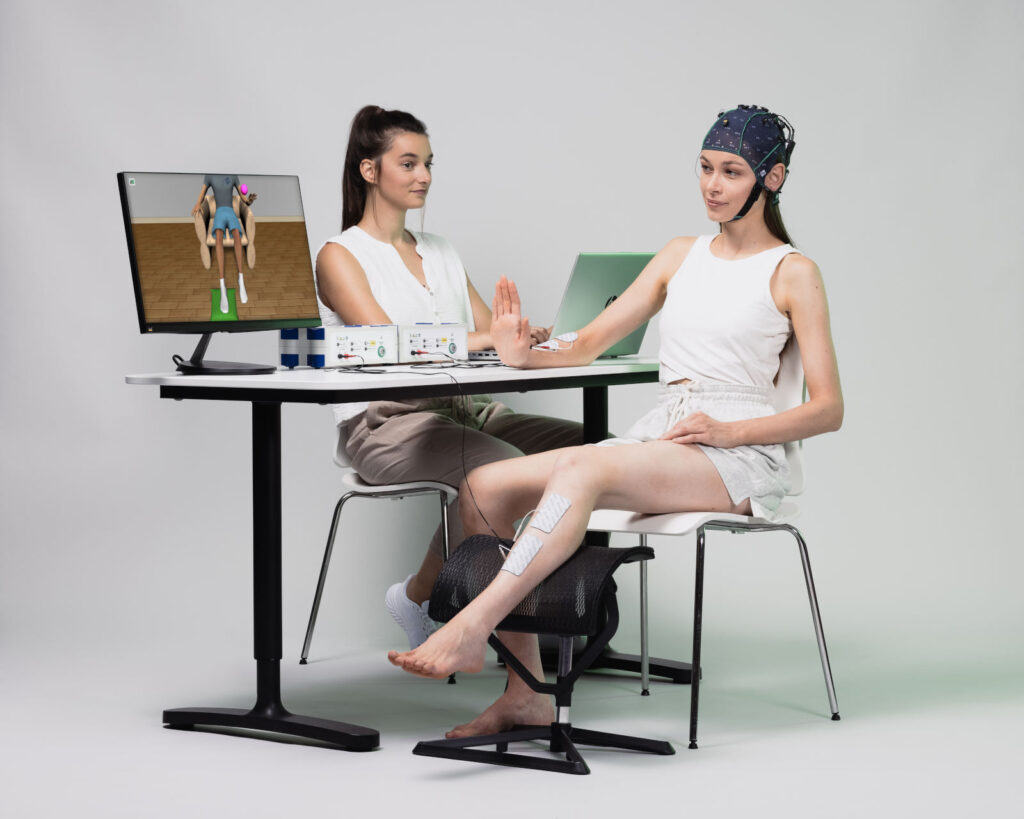Optimize Upper & Lower Limbs
recoveriX is measuring EEG activity while a patient imagines a hand or foot movement. Once recoveriX detects a motor imagination, it triggers a functional electrical stimulation of the limb so that the limb performs a real movement. Patients love that – especially if they have suffered for a few years. This procedure is repeated 8000 times and connects cognitive functions with motor behavior. Due to the amount of repetitions, neurons are forming new connections to relearn the movement. A recoveriX MS patient has to undergo 30 sessions, each lasting for about 45 minutes, ideally 2-3 times per week.
The MS therapy treats legs/feet and hands/arms. The treatment reduces spasticity and leads to better fine and gross motoric skills in upper and lower extremities.
recoveriX Results from Patient Z.
“In a few weeks, you’ll be tied to your wheelchair.” These were the discouraging words from the doctors that patient Z. heard. He lives with MS for 26 years already.
- 25-Feet Walking Test: Before recoveriX: 25 seconds; After recoveriX: 15 seconds.
- 6-Minute Walking Test: Before recoveriX: 77 meters; After recoveriX: 135 meters.
- Spasticity in left leg: Much less which lead to better gait pattern and more balance.
- Neuroplasticity changes: lot of more activation of the sensorimotor cortex after therapy.
“During the first 7 sessions, I thought that I am just wasting my time. In session 8 suddenly my left leg started to move again. Joining the recoveriX program was the best thing I ever did” said the patient. “I can stand up again more easily, my concentration improved, standing up and sitting down is easier due to more stability and balance. My wife drove me to recoveriX therapy but after the third session, I could drive myself.” he continued.
recoveriX Results from Patient X.
“There is nothing you can do, it will only get worse from here on out.” Patients with multiple sclerosis frequently hear this from their doctors. Only 25 hours of recoveriX therapy are necessary to observe a noticeable effect.
- 25 Feet Walking Test: Before recoveriX: 40 seconds; After recoveriX: 19 seconds. The patient walks twice as fast and her gait pattern is much better. Foot drop is highly reduced and her balance became much better.
- 6-Minute Walk Test: Before recoveriX: 34 meters; After recoveriX: 101 meters. Her walking endurance became much better.
- Fatigue Scale: Highly reduced. She became more active in her daily life.
- Spasticity: Highly reduced. This leads to a better gait pattern and more balance.
She arrived in a wheelchair and was only able to walk a short distance before the therapy. She had to pause or take a brief break after each step. After the recoveriX therapy, she is now walking with a stick, spending more time outside, having more energy, being less sleepy, being able to lift off her foot more easily, and her foot stays on the ground much more firmly when she is standing. She thought it was “super cool here” in the recoveriX center. While her memory and attentiveness have always been strong, her coordination has also improved. She traded in her three-point walking stick for “LEKI” walking sticks. She added that her hand had grown stronger in the end.
Objective Measures







